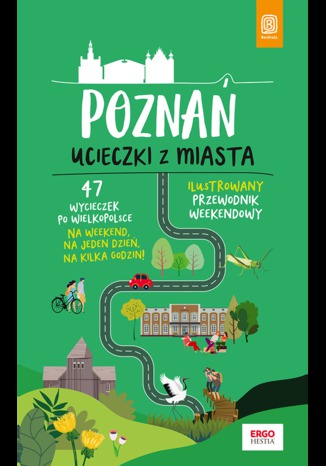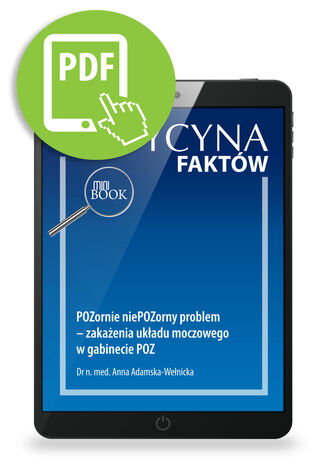Categories
-
- Bitcoin
- Businesswoman
- Coaching
- Controlling
- E-business
- Economy
- Finances
- Stocks and investments
- Personal competence
- Computer in the office
- Communication and negotiation
- Small company
- Marketing
- Motivation
- Multimedia trainings
- Real estate
- Persuasion and NLP
- Taxes
- Social policy
- Guides
- Presentations
- Leadership
- Public Relation
- Reports, analyses
- Secret
- Social Media
- Sales
- Start-up
- Your career
- Management
- Project management
- Human Resources
-
- Architektura i wnętrza
- Health and Safety
- Biznes i Ekonomia
- Home and garden
- E-business
- Ekonomia i finanse
- Esoterecism
- Finances
- Personal finance
- Business
- Photography
- Computer science
- HR & Payroll
- For women
- Computers, Excel
- Accounts
- Culture and literature
- Scientific and academic
- Environmental protection
- Opinion-forming
- Education
- Taxes
- Travelling
- Psychology
- Religion
- Agriculture
- Book and press market
- Transport and Spedition
- Healthand beauty
-
- Office applications
- Data bases
- Bioinformatics
- IT business
- CAD/CAM
- Digital Lifestyle
- DTP
- Electronics
- Digital photography
- Computer graphics
- Games
- Hacking
- Hardware
- IT w ekonomii
- Scientific software package
- School textbooks
- Computer basics
- Programming
- Mobile programming
- Internet servers
- Computer networks
- Start-up
- Operational systems
- Artificial intelligence
- Technology for children
- Webmastering
-
- Antology
- Ballade
- Biographies and autobiographies
- For adults
- Dramas
- Diaries, memoirs, letters
- Epic, epopee
- Essay
- Fantasy and science fiction
- Feuilletons
- Work of fiction
- Humour and satire
- Other
- Classical
- Crime fiction
- Non-fiction
- Fiction
- Mity i legendy
- Nobelists
- Novellas
- Moral
- Okultyzm i magia
- Short stories
- Memoirs
- Travelling
- Narrative poetry
- Poetry
- Politics
- Popular science
- Novel
- Historical novel
- Prose
- Adventure
- Journalism, publicism
- Reportage novels
- Romans i literatura obyczajowa
- Sensational
- Thriller, Horror
- Interviews and memoirs
-
- Archeology
- Bibliotekoznawstwo
- Cinema studies
- Philology
- Polish philology
- Philosophy
- Finanse i bankowość
- Geography
- Economy
- Trade. World economy
- History and archeology
- History of art and architecture
- Cultural studies
- Linguistics
- Literary studies
- Logistics
- Maths
- Medicine
- Humanities
- Pedagogy
- Educational aids
- Popular science
- Other
- Psychology
- Sociology
- Theatre studies
- Theology
- Economic theories and teachings
- Transport i spedycja
- Physical education
- Zarządzanie i marketing
-
- Health and Safety
- History
- Road Code. Driving license
- Law studies
- Healthcare
- General. Compendium of knowledge
- Academic textbooks
- Other
- Construction and local law
- Civil law
- Financial law
- Economic law
- Economic and trade law
- Criminal law
- Criminal law. Criminal offenses. Criminology
- International law
- International law
- Health care law
- Educational law
- Tax law
- Labor and social security law
- Public, constitutional and administrative law
- Family and Guardianship Code
- agricultural law
- Social law, labour law
- European Union law
- Industry
- Agricultural and environmental
- Dictionaries and encyclopedia
- Public procurement
- Management
-
- Africa
- Albums
- Southern America
- North and Central America
- Australia, New Zealand, Oceania
- Austria
- Asia
- Balkans
- Middle East
- Bulgary
- China
- Croatia
- The Czech Republic
- Denmark
- Egipt
- Estonia
- Europe
- France
- Mountains
- Greece
- Spain
- Holand
- Iceland
- Lithuania
- Latvia
- Mapy, Plany miast, Atlasy
- Mini travel guides
- Germany
- Norway
- Active travelling
- Poland
- Portugal
- Other
- Przewodniki po hotelach i restauracjach
- Russia
- Romania
- Slovakia
- Slovenia
- Switzerland
- Sweden
- World
- Turkey
- Ukraine
- Hungary
- Great Britain
- Italy
-
- Philosophy of life
- Kompetencje psychospołeczne
- Interpersonal communication
- Mindfulness
- General
- Persuasion and NLP
- Academic psychology
- Psychology of soul and mind
- Work psychology
- Relacje i związki
- Parenting and children psychology
- Problem solving
- Intellectual growth
- Secret
- Sexapeal
- Seduction
- Appearance and image
- Philosophy of life
-
- Bitcoin
- Businesswoman
- Coaching
- Controlling
- E-business
- Economy
- Finances
- Stocks and investments
- Personal competence
- Communication and negotiation
- Small company
- Marketing
- Motivation
- Real estate
- Persuasion and NLP
- Taxes
- Social policy
- Guides
- Presentations
- Leadership
- Public Relation
- Secret
- Social Media
- Sales
- Start-up
- Your career
- Management
- Project management
- Human Resources
-
- Antology
- Ballade
- Biographies and autobiographies
- For adults
- Dramas
- Diaries, memoirs, letters
- Epic, epopee
- Essay
- Fantasy and science fiction
- Feuilletons
- Work of fiction
- Humour and satire
- Other
- Classical
- Crime fiction
- Non-fiction
- Fiction
- Mity i legendy
- Nobelists
- Novellas
- Moral
- Okultyzm i magia
- Short stories
- Memoirs
- Travelling
- Poetry
- Politics
- Popular science
- Novel
- Historical novel
- Prose
- Adventure
- Journalism, publicism
- Reportage novels
- Romans i literatura obyczajowa
- Sensational
- Thriller, Horror
- Interviews and memoirs
-
- Philosophy of life
- Interpersonal communication
- Mindfulness
- General
- Persuasion and NLP
- Academic psychology
- Psychology of soul and mind
- Work psychology
- Relacje i związki
- Parenting and children psychology
- Problem solving
- Intellectual growth
- Secret
- Sexapeal
- Seduction
- Appearance and image
- Philosophy of life
Jaka jest natura Boga? Jak możemy odzyskać prawdziwe poczucie majestatu Boga i naprawdę żyć w Duchu? Ta wspaniała książka, klasyk chrześcijańskiego świadectwa i pobożności, odpowiada na te, i inne istotne pytania. Ukazano w niej również, jak możemy odświeżyć nasze życie modlitewne, głębiej zrozumieć Boga, a także doświadczać Jego obecności w naszym codziennym życiu. Pouczająca i inspirująca publikacja rzuca światło na atrybuty Boga - od mądrości, przez łaskę, po miłosierdzie - i pokazuje poprzez modlitewną i wnikliwą dyskusję, w jaki sposób możemy pełniej rozpoznać oraz docenić każdy z tych boskich aspektów. Poznanie Świętego stanie się cennym skarbem dla każdego, kto jest oddany wierze chrześcijańskiej. Daje wymowne świadectwo majestatu Boga, pokazuje nam nowe sposoby doświadczania oraz rozumienia cudowności i mocy Ducha Bożego w naszym codziennym życiu. Aiden Wilson Tozer urodził się w Newburg (stan Pennsylvania) dnia 21 kwietnia 1897 roku. W 1912 roku cała rodzina wyprowadziła się do Akron, Ohio. W 1915 r. Tozer powierzył swoje życie Chrystusowi i od razu zaczął prowadzić pobożne życie. W 1919 r. rozpoczął pracę pastora w zborze w Nutter Fort. Kontynuował tę pracę będąc pastorem kilku innych zborów, między innymi zboru "Southside Alliance" w Chicago, gdzie pełnił tę funkcję przez 31 lat, tj. do listopada 1959 r. Następnie został pastorem zboru Avenue Road Church w Toronto. Nagły atak serca zakończył jego służbę 12 maja 1963 roku.
Poznanie, zbiorowość, polityka. Analiza teorii aktora-sieci Bruno Latoura
Teoria aktora-sieci to jedna z najbardziej zaskakujących i nowatorskich koncepcji, jakie pojawiły się w humanistyce i naukach społecznych na przełomie wieków. W przeciągu ok. trzydziestu lat swego istnienia rozwinęła się i wychodząc od badania nauki w laboratoriach przechodziła do coraz to innych obszarów, zaś jej przedstawiciele - B. Latour, M. Callon, J. Law - uzyskali szerokie, międzynarodowe uznanie. Książka Poznanie, zbiorowość, polityka. Analiza teorii aktora-sieci Bruno Latoura jest pierwszą monografią w języku polskim poświęconą tej koncepcji. Można ją czytać jako wprowadzenie do teorii aktora-sieci wiodącej od zagadnień epistemologicznych do teorii społecznej i filozofii polityki. Jednakże jest ona także próbą uczynienia z teorii aktora-sieci spójnego stanowiska filozoficznego, które przekształca nasze myślenie o praktykach poznawczych, o świecie społecznym i problemach politycznych. Krzysztof Abriszewski - pracuje w Instytucie Filozofii Uniwersytetu Mikołaja Kopernika w Toruniu. Publikował prace poświęcone m.in. teorii aktora-sieci, niedualizującemu sposobowi mówienia, etyce dalekiego zasięgu i kulturowym funkcjom filozofii. Realizował projekt interdyscyplinarnych badań nad inflacją informacyjną i dominacją czasu szybkiego w kulturze współczesnej. Uczestnik inicjatywy Forum Humanistycznego (www.forhum.umk.pl) wiążącego badaczy z różnych dyscyplin akademickich. Tłumacz tekstów R. Rorty'ego, S. Fisha, H. Putnama i B. Latoura.
Poznań i okolice. Wycieczki i trasy rowerowe. Wydanie 2
Natalia Drabek, Michał Unolt, Michał Franaszek
Przewodnik rowerowy Poznań i okolice powstał z myślą o wszystkich, którzy chcą łączyć aktywny wypoczynek z poznawaniem atrakcji krajoznawczych regionu, w którym przebywają. Trasy zaplanowano tak, by każdy mógł znaleźć odpowiednią dla siebie, zarówno rodziny z dziećmi, jak i bardziej zaawansowani rowerzyści. Opisom wycieczek towarzyszą zdjęcia, mapy i profile wysokościowe. Całość uzupełnia zwięzły poradnik. Przewodnik z pewnością spełni swoje zadanie, zachęcając do odkrywania niezwykłych miejsc, często położonych zaskakująco blisko. Zapraszamy na rowerowy szlak! 25 tras o różnym stopniu trudności Dokładne mapy Profile wysokościowe Poradnik rowerowy
Duma, porządek, oszczędność, stabilizacja, szacunek dla regulaminów to poznaniak, Wielkopolanin. Jak jest naprawdę? Poznań według Kąckiego to miasto świetnie zaprojektowane, otwarte na rozwój, przyjazne dla młodych, ale także miasto, którego dusza tkwi w pruskim drylu, miasto, w którym zaangażowanie spotyka się z ignorancją, a pod płaszczykiem religii i ideowości kryją się często agresja, złość i niskie instynkty. Arcybiskup Juliusz Paetz i młodzi klerycy, Wojciech Krolopp i nieletni chórzyści, marszałek Józef Piłsudski i Roman Dmowski, Małgorzata Musierowicz i Stanisław Barańczak, katolicy i Żydzi, Poznań i reszta Polski. Przyciągające się przeciwieństwa tworzą fascynujący obraz kulis władzy, hipokryzji mieszczaństwa oraz tego, jak potrafimy ulegać ludziom, którzy dzięki grze pozorów i mowie nienawiści wzmacniają podziały społeczne, ideologiczne i religijne.
“Poznań ostoją myśli polskiej” to utwór Stanisława Przybyszewskiego, polskiego pisarza, poety, dramaturga okresu Młodej Polski. Przybyszewski był skandalistą, przedstawicielem cyganerii krakowskiej i nurtu polskiego dekadentyzmu. “Nie pomnę, by kiedykolwiek głębiej rozradowało się moje serce, jak w chwili, gdym wyczytał te wstępne słowa „Ostoi“, spółki wydawniczej w Poznaniu, „mającej na celu teraz właśnie, kiedy ruch wydawniczy w Królestwie i Galicyi prawie całkiem ustał, dać pisarzom polskim, których twórczość w obecnych warunkach zatamowaną została, możność wydawania ich utworów, przyjść im tem samem z doraźną pomocą materyalną a społeczeństwu polskiemu dostarczyć karmi duchowej, której teraz więcej, niż kiedykolwiek potrzebuje“. Zostałem wychowany w najświetniejszych tradycyach życia umysłowego w Poznańskiem, życia, tak bogatego i dostojnego, że się dziś ono wydaje być jakąś przepiękną legendą, onego życia, jakiem żył Poznań między rokiem 1830 a 1850-tym.” Fragment.
Poznań najczęściej kojarzy się z dwoma koziołkami, pyrami i oszczędnością jego mieszkańców. Jednak stolica Wielkopolski ma do zaoferowania o wiele, wiele więcej. Amatorzy zwiedzania zachwycają się zróżnicowaniem architektury oraz ofertą muzeów (m.in. jedną z największych kolekcji malarstwa w Polsce). Historyków fascynują zabytki z czasów Mieszka I i chrztu Polski. Profesjonaliści zjeżdżają tu na spotkania i targi organizowane na terenie Międzynarodowych Targów Poznańskich. Malta Festival przyciąga do Poznania wielbicieli teatru z całej Europy, miłośnicy przyrody odpoczywają m.in. nad słynącym z międzynarodowych regat Jeziorem Maltańskim, a ci, którzy kochają zakupy, buszują w wielokrotnie nagradzanym centrum handlowym Stary Browar. Zabytki z czasów narodzin Polski Niesztampowe muzea i galerie Sztuka i rozrywka w najlepszym wydaniu Romantyczne zaułki i oazy zieleni Ciekawa kuchnia i przyjazna atmosfera Travelbook to Twój niezastąpiony towarzysz podróży. Wskaże najważniejsze atrakcje, podpowie, czego szukać poza głównymi szlakami, i wprowadzi w świat miejscowych obyczajów. Znajdziesz w nim opisy najciekawszych regionów i miast, a sprawdzone informacje praktyczne umożliwią staranne zaplanowanie podróży. Katarzyna Byrtek – pisze i podróżuje od zawsze, razem i osobno. Od 2008 r. współpracuje z największymi polskimi wydawnictwami podróżniczymi – napisała i redagowała przewodniki po czeskiej Pradze, napisała przewodnik po Nowym Jorku (także wersja ang.), przewodniki po Amsterdamie, jest autorką tekstów podróżniczych. Jej najnowsze dziecko to blog https://askadjestes.com, nie tylko o podróżach, ale też o samotności, ekscytacji i o tym, co zmienia się w czasie wędrówki. Pisze też książkę i fotografuje. Studiowała Dziennikarstwo i Filologię Czeską w Krakowie, po drugim roku zdecydowała połączyć te dwie pasje i wyjechała na studia do czeskiej Pragi, gdzie mieszka od wielu lat. Zawodowo tłumaczy z czeskiego i uczy języków, w wolnym czasie gotuje w Pradze polskie jedzenie i pielęgnuje miłość do rowerów.
Poznań. Ucieczki z miasta. Przewodnik weekendowy. Wydanie 1
Przewodnik Poznań. Ucieczki z miasta to zbiór kilkudziesięciu propozycji wycieczek po Wielkopolsce - na pół dnia, na cały dzień i na weekend. Skorzystaj z pomysłów na wypady za miasto w ciekawe, często niebanalne i rzadko odwiedzane miejsca, do których można dotrzeć w zaledwie kilkadziesiąt minut. Ile masz czasu? W przewodniku znajdziesz podpowiedzi wycieczek kilkugodzinnych, jednodniowych i weekendowych. Wybierz taką, która akurat Ci odpowiada! Co chcesz robić? Możesz wybierać spośród wielu różnorodnych pomysłów na spędzenie czasu za miastem. Są tu propozycje zarówno dla miłośników zabytków i muzeów, jak i dla spragnionych odpoczynku na łonie natury, dla rodzin z dziećmi i dla amatorów pieszych wędrówek, jazdy na rowerze czy pływania kajakiem. Ruszaj! Niczego więcej nie potrzebujesz, by ruszyć w drogę. W przewodniku odnajdziesz opisy tras wycieczek i zakątków, które warto zobaczyć, a także informacje o dojazdach i powrotach, godzinach otwarcia obiektów, miejscach noclegowych i lokalach gastronomicznych.
Poznawanie i nazywanie. Refleksja cywilizacyjna i epistemologiczna w polskiej poezji modernistycznej
Barbara Sienkiewicz, Maria Cieśla-Korytowska
Autorka konstruuje w książce obraz polskiej poezji modernistycznej od ostatnich dziesięcioleci XIX wieku po poezję neolingwistyczną przełomu wieków XX i XXI. Dominują w nim dwa zagadnienia, kluczowe dla świadomości modernistycznej - poznawania i nazywania, ale uzupełniają kwestie i dylematy, które autorka uznaje za pochodne wobec nich: podmiotowości, stosunku do problematyki cywilizacyjnej, do historii, do racjonalizmu.
Poznawanie Kępińskiego. Biografia psychiatry
Biografia Antoniego Kępińskiego, najsłynniejszego polskiego psychiatry w XX-wieku, humanisty i filozofa, na którego książkach wychowały się całe pokolenia. Unikał stanowisk kierowniczych. Nie lubił zebrań. Na konferencje naukowe wysyłał młodszych od siebie. Jego czas miał jedno przeznaczenie: pacjenci. Słuchał ich uważnie i cierpliwie, zdobywał zaufanie, najpierw poznawał, potem leczył. Antoni Kępiński już za życia był legendą. Lecz jaki był prywatnie? Dlaczego wybrał psychiatrię? Czy doświadczył psychozy, jak utrzymują niektórzy? Jaki wpływ wywarło na niego brutalne pobicie przez bojówkarzy w przedwojennym Krakowie, a potem jeszcze straszliwsze zmaltretowanie w obozie koncentracyjnym Miranda de Ebro? Anna Mateja zabiera nas w niezwykłą i pełną wrażeń podróż po życiu i pracy krakowskiego lekarza i filozofa. Oto jesteśmy świadkami narodzin małego Antosia w rodzinie legitymującej się jednym z najstarszych herbów szlacheckich. Widzimy, jak niemowlę, które zawierucha I wojny światowej rozdzieliła z rodzicami, wraca do nich wraz z nianią dzięki wymianie na dwóch ukraińskich oficerów. Obserwujemy, jak młody Kępiński dorasta, zdaje maturę, rozpoczyna studia medyczne, a potem we wrześniu 1939 roku wraz z wojskiem opuszcza bombardowany Kraków. Przez Węgry, Bałkany, północne Włochy, Francję, Hiszpanię dociera w końcu na Gibraltar i trafia do Anglii, by tam zostać pilotem RAF-u. Los jednak zechce inaczej A potem wracamy do Krakowa, odwiedzamy mieszkanie przy ulicy Warszawskiej, w którym koty mogły chodzić po stołach i zaglądać gościom do filiżanek, smakujemy pieprzówki w Wierzynku i ulubionych przez Profesora solodrążków, podawanych z czarną po turecku podczas pamiętnych dyskusji w klinice. Tę pasjonującą biografię czyta się niemalże jak powieść. Oparta na nieznanych dotąd źródłach, niepublikowanych listach Kępińskiego i świadectwach jego bliskich oraz współpracowników, rzuca nowe światło na postać słynnego psychiatry, którego pionierskie badania nad KZ-syndromem stanowią podwaliny naszej wiedzy o urazach psychicznych więźniów obozów koncentracyjnych.
Poznawanie pacjenta w psychoterapii ericksonowskiej
Pierwsze polskie syntetyczne i wielowymiarowe ujęcie psychoterapii ericksonowskiej Krzysztof Klajs, doświadczony psychoterapeuta, w przejrzysty sposób prowadzi czytelnika poprzez istotne aspekty diagnozy w podejściu ericksonowskim, której podstawowym celem jest znalezienie indywidualnej ścieżki powrotu do zdrowia bądź odzyskanie przez pacjenta wewnętrznej równowagi. Co czyni tę książkę wyjątkową na rynku polskim: * Zawiera liczne przykłady z sesji terapeutycznych i historie pacjentów opatrzone komentarzami i refleksjami autora. * Odsłania sposób myślenia terapeuty w nurcie ericksonowskim na czym się koncentruje i jakie znaczenia nadaje temu, co widzi, słyszy i czuje. * Przedstawia w sposób zwięzły metody pracy z pacjentem m.in. wykorzystanie zjawisk transowych, rozpoznawaniem systemów rodzinnych, rozwijanie hipotez diagnostycznych. * Zwraca uwagę, że nie tylko pacjent, ale i terapeuta jest indywidualnością, z właściwą sobie niepowtarzalną wrażliwością diagnostyczną; pomocą w rozwijaniu tej wrażliwości może być niniejsza książka. Krzysztof Klajs jest po stronie pacjenta: nie klasyfikuje go, nie zamyka w suchych diagnozach, lecz dąży do zrozumienia jego przeżyć oraz do znalezienia dróg pomocy. W tym podejściu zmiana nie jest osiągana poprzez tropienie deficytów i urazów, lecz już od pierwszego spotkania z pacjentem poprzez docieranie do zasobów. Perspektywa indywidualna przeplata się tutaj z perspektywą systemową. Książka jest napisana przez doświadczonego i wnikliwego praktyka, a liczne przykłady czynią podróż w świat psychoterapii przygodą wręcz fascynującą tak dla początkujących, jak i dla doświadczonych terapeutów. prof. Bogdan de Barbaro
Poznawcze i temperamentalne wyznaczniki kryminogenezy nieletnich
Podstawowym problemem badawczym niniejszej publikacji jest weryfikacja poznawczych i temperamentalnych korelatów demoralizacji nieletnich. Autorka próbuje przybliżyć wzorce wchodzenia w interakcje społeczne młodzieży oraz nakreślić obraz ich przekonań osobistych, który odzwierciedla sposób postrzegania przez nich świata, relacji międzyludzkich oraz postawę wobec własnej osoby. Nieletnich cechuje specyficzny sposób przetwarzania informacji społecznych, który sprzyja uruchamianiu i podtrzymywaniu zachowań przestępczych. Przetwarzanie informacji społecznych przez nieletnich zostanie uchwycone pod względem uruchamianych stylów myślenia przestępczego i skonfrontowane z potencjalnymi temperamentalnymi i intelektualnymi czynnikami ryzyka.
Po co być sobą, gdy możesz być doskonała April jest miła, piękna i stosunkowo normalna, a jednak z jednym mężczyzną nie spotyka się więcej niż pięć razy. Za każdym razem, gdy sądzi, że znalazła kogoś, komu może zaufać, osoba ta okazuje się wręcz okropna. Dziewczyna ma złamane serce, jest rozgoryczona. Gdyby tylko April bardziej przypominała Gretel Gretel jest dokładnie tym, czego pragną mężczyźni: bezproblemową, wyśnioną seksowną dziewczyną z sąsiedztwa. Rzecz w tym, że Gretel nie istnieje, a April się pod nią podszywa, tworząc fikcyjny profil. Kiedy April wciela się w Gretel, randkowanie od razu staje się o wiele przyjemniejsze, zwłaszcza gdy owija sobie wokół palca niczego niepodejrzewającego Joshuę. W końcu to April jest osobą, która rozdaje karty. Tylko czy uda jej się kontrolować własne uczucia? Czy będzie w stanie nadal udawać Gretel, gdy jej relacja z Joshuą zacznie stawać się coraz bardziej intymna? Wyśmienita powieść. Szczera do bólu i słusznie pełna gniewu, a przy tym niezwykle wciągająca. Chylę czoła!. Marian Keyes, autorka Wakacji Rachel i Sushi dla początkujących Pozorantka to wnikliwe spojrzenie na to, jak to jest być współczesną kobietą. Lektura inspirująca, skłaniająca do refleksji. Demaskująca i uzdrawiająca. Giovanna Fletcher, współautorka cyklu Nowa Ewa
Pozorna tożsamość. Polskie tradycjonalizmy z semantycznym archaizmem
Podstawowym celem monografii jest opis wybranych współczesnych połączeń wyrazowych (frazeologizmy, paremie, zestawienia, terminy) mieszczących w swoim składzie archaizm semantyczny. Omawiane w pracy konstrukcje słowne nie noszą wyraźnych śladów archaiczności, z pozoru są współczesne, tożsame, niczym się nie wyróżniają. To dowód na to, że ślady obecności historii we współczesnej polszczyźnie nie zawsze łatwo wykryć, czasem są one utajone, a nawet nieuświadamiane. Tego typu związki wyrazowe autorka nazywa w rozprawie tradycjonalizmami (w opozycji do związków bez archaicznych form języka w swoim składzie). Analizie poddaje każdą z osobna konstrukcję słowną z archaizmem, pokazuje w przekroju historycznym jej losy w języku polskim. Opis zachowanych do współczesności jednostek jest dla badaczki bodźcem do podejmowania szerszych rozmyślań m.in. na temat powodów trwałości jednych frazeologizmów z elementem archaicznym i braku stabilizacji innych czy procesów reinterpretacyjnych. Fakt, że wyrazy zachowały swoje dawne znaczenia w konstrukcjach słownych, nie oznacza jeszcze, że te sensy są trwałe i nie mogą ulec zapomnieniu. Zdarza się, że konstrukcje słowne mieszczące jakiś historyczny element języka są dzisiaj rozumiane na nowo, interpretowane na podstawie aktualnego znaczenia wyrazu, czasem ulegają modyfikacjom semantycznym czy formalnym.
Małżeństwo Julii z Miłoszem było idealne. Zakochanych łączyło spełnienie prywatne, jak i zawodowe, a także wspólna pasja do gotowania. Do pełni szczęścia brakowało im tylko dziecka. W końcu zaczęli się więc o nie starać. Niestety, ich niezwykłe szczęście okazało się tylko pozorne. Wraz z decyzją o dziecku zaczęły piętrzyć się problemy. Problemy, które wynikły z nagłego, dużego kryzysu w firmie Miłosza. Los zaczął wystawiać ich małżeństwo na coraz to cięższe próby. Zupełnie, jakby chciał ich rozdzielić. Julia i Miłosz zawalczą o ich wspólne szczęście, ale czy wystarczy im sił w tej nierównej walce?
POZornie niePOZorny problem - zakażenia układu moczowego w gabinecie POZ
Stwierdzenie zakażenia układu moczowego jest jedną z najczęstszych sytuacji w gabinecie lekarza POZ, w której zaleca się antybiotyk. W niniejszym artykule omówiono grupy chorych, u których w oparciu o aktualne doniesienia zastosowanie znajduje znana od wielu lat fosfomycyna. Przedstawiono także możliwości zastosowania tego antybiotyku w sytuacji zakażeń układu moczowego patogenami wielolekoopornymi.
Tomek to młody pracownik korporacji, który każdego dnia zmaga się nie tylko z presją otoczenia, ale także z własnymi słabościami. Koleżanki i koledzy z pracy nie ułatwiają mu życia, odreagowując trudy codzienności. Gdy niespodziewanie dla siebie i innych mężczyzna znajduje nić porozumienia z Anną, na horyzoncie pojawia się widmo konieczności pracy zdalnej. Jaką historię skrywa Tomek, i jak przymus odseparowania wpłynie na jego relacje z innymi? Czy w świecie, który stale pędził do przodu i nagle się zatrzymał, jest miejsce na rozmowę, przyjaźń i miłość?
















